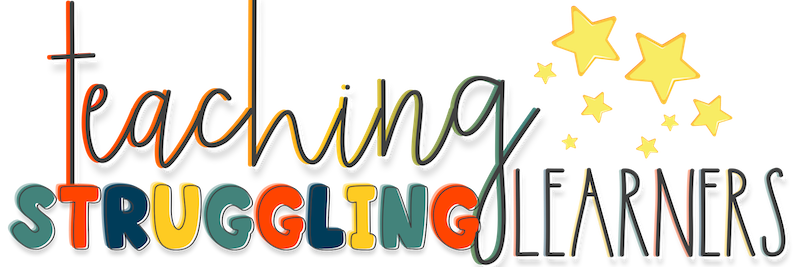Why is collecting data such hard work?

IEPs, and paperwork, goals, and present levels, evaluations, and reports….special education teachers are buried in all the things they have to do. Let’s talk about how to progress monitor IEP goals to make life easier.
Last week we talked about Teaching IEP Goals. Now we will find easy ways to collect data on that great teaching you’ve done!
One time-consuming activity is finding ways to collect data on goals that we have written. When we don’t collect that data over the course of the quarter, it really bites us at progress report time. So, this time around, let’s get in good shape to progress monitor the IEP goals and be ready next time progress reports roll around.
How do I start collecting data?
Start by breaking goals into 3 categories: Daily living skills, Executive functioning/behavior, and Academic.
How do I collect data for daily living skills?
For daily living skills, I use a tracker to write the goal. Use plus or minus symbols to track the instances. For example, if the goal is to wash hands after using the restroom without prompting, I put a minus on the sheet if I needed to prompt the student. If they are successful, write a plus. Do this same process for feeding goals, or any toileting goals. Click the picture for a link to my free data tracker, so make sure you download that to get started in data tracking.

How do I collect data on behavior?
For behavior or executive functioning skills, my progress monitoring for IEP goals is very similar. I tend to track these over the course of the week, and will give my general education teachers sheets to track data, in addition to the ones I use in my classroom. For example, if the goal is for the student to write their homework in their planner when prompted in whole-group, the teacher could check when she walks around and if the student needs additional prompts, she would put a minus sign for the day. I like to collect general ed teacher data weekly so that they know that I’m looking at it and expecting to see some results over time. (For more about getting general education teachers involved in IEPs and data collection, check out How to Get Gen Ed Teachers Involved in IEPs.)
My behavior tracking is the same, the teacher (or I) might mark a plus sign when a student uses a break card, or raises their hand without calling out. At the end of the week, I would figure out the success rate and put that in my goal tracker. I’ll talk next week about how I use my goal tracker, but I will say that it has saved my butt several times when I’ve been called into last minute meetings with parents wanting to know why their child is failing Algebra or what-have-you.
How do I collect academic data?

For academic goals, obviously data collection looks different based on the skill and grade level. For letter, sight word, or number identification, I use my progress monitoring sheets and materials. My data collection always looks the same over time. This helps me to keep things organized. Also students become comfortable with the assessment format. This helps me know the percent correct is a good reflection of the student’s abilities. For examples of what I use for academic IEP goal progress monitoring, click the photo.
Whatever way you choose to collect academic data, collect the assessment pieces before you begin. Then you have them ready as you go through the year. Getting them copied or prepared ahead of time, prevents scrambling to find things. Also the students will be more comfortable with the format. I’ve found that changing up the look of assessments can really distract students and can impact their performance.
